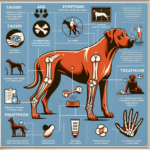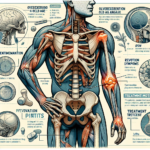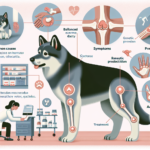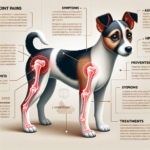Rhodesian Ridgeback Joint Pain: Causes, Symptoms, Prevention, and Treatment

Introduction
The Rhodesian Ridgeback is a distinctive and versatile breed known for its unique ridge of hair running along its back, which grows in the opposite direction to the rest of the coat. Originating from Southern Africa, this breed was initially developed to hunt lions and protect homesteads. The Ridgeback is characterized by its strength, endurance, and loyalty, making it a popular choice for both working and companion roles.
Like many large breeds, the Rhodesian Ridgeback is prone to certain health issues, with joint pain being a significant concern. Joint health is crucial for maintaining the breed’s active lifestyle and overall well-being. Understanding the causes, symptoms, prevention, and treatment of joint pain in Rhodesian Ridgebacks can help owners ensure their dogs lead healthy, pain-free lives.
Breed-Specific Joint Pain Risks
Genetic Predisposition
Rhodesian Ridgebacks are genetically predisposed to several joint-related issues, including hip dysplasia, elbow dysplasia, and arthritis. Hip dysplasia is a condition where the hip joint does not fit properly into the hip socket, leading to pain and mobility issues. Elbow dysplasia involves abnormal development of the elbow joint, causing lameness and discomfort. Arthritis, a degenerative joint disease, can also affect Ridgebacks, leading to chronic pain and stiffness.
Age-Related Risks
As Rhodesian Ridgebacks age, the risk of developing joint pain increases. Senior dogs are more susceptible to arthritis and other degenerative joint conditions. Owners should be vigilant about monitoring their Ridgebacks for signs of joint pain as they reach middle age, typically around 6-8 years old, although symptoms can appear earlier in some cases.
Activity Level and Joint Stress
Rhodesian Ridgebacks are known for their high energy levels and need for regular exercise. While physical activity is essential for their overall health, excessive or inappropriate exercise can put undue stress on their joints. Activities such as running on hard surfaces, jumping, and high-impact sports can exacerbate joint issues, especially in dogs with a genetic predisposition to joint problems.
Common Symptoms of Joint Pain in Rhodesian Ridgebacks
General Symptoms
- Limping or favoring one leg
- Stiffness, especially after rest or exercise
- Reluctance to move, jump, or climb stairs
- Decreased activity level or interest in play
- Swelling or heat around the joints
- Changes in behavior, such as irritability or aggression
Breed-Specific Symptoms
In Rhodesian Ridgebacks, joint pain may manifest more prominently in the hips and elbows due to their predisposition to hip and elbow dysplasia. Owners may notice a swaying gait or difficulty rising from a lying position. Additionally, Ridgebacks may exhibit a reluctance to engage in activities they once enjoyed, such as running or playing fetch.
When to Consult a Vet
If a Rhodesian Ridgeback shows any signs of joint pain, it is essential to consult a veterinarian promptly. Early diagnosis and intervention can prevent further deterioration and improve the dog’s quality of life. Persistent limping, noticeable discomfort, or any sudden changes in mobility should be addressed by a veterinary professional.
Preventive Measures for Joint Health
Exercise Recommendations
Regular, low-impact exercise is crucial for maintaining joint health in Rhodesian Ridgebacks. Activities such as walking, swimming, and controlled play can help keep their joints flexible and muscles strong without causing excessive stress. Avoid high-impact activities like jumping or running on hard surfaces, especially for young puppies and senior dogs.
Dietary Suggestions
A balanced diet rich in essential nutrients can support joint health in Rhodesian Ridgebacks. Foods containing glucosamine, chondroitin, and omega-3 fatty acids are particularly beneficial for joint maintenance. Owners may also consider supplements specifically designed for joint health, but it is essential to consult a veterinarian before adding any supplements to the dog’s diet.
Weight Management
Maintaining a healthy weight is critical for reducing joint stress in Rhodesian Ridgebacks. Excess weight can exacerbate joint problems and lead to additional health issues. Owners should monitor their dog’s weight and adjust their diet and exercise routine as needed to prevent obesity. Regular veterinary check-ups can help ensure the dog remains at an optimal weight.
Early Screening and Monitoring
Early screening for joint issues can help identify potential problems before they become severe. Veterinary professionals can perform specific tests, such as X-rays or joint fluid analysis, to assess joint health. Regular monitoring and check-ups can help catch any changes in joint condition early, allowing for timely intervention and management.
Treatment Options for Joint Pain
Non-Surgical Treatments
Non-surgical treatments for joint pain in Rhodesian Ridgebacks include medications, physical therapy, and lifestyle adjustments. Anti-inflammatory drugs and pain relievers can help manage pain and reduce inflammation. Physical therapy, including exercises and massage, can improve joint mobility and strength. Lifestyle adjustments, such as providing a comfortable bed and avoiding high-impact activities, can also alleviate joint pain.
Surgical Options
In severe cases of joint pain, surgical intervention may be necessary. Common surgical options for Rhodesian Ridgebacks include hip replacement, elbow arthroscopy, and joint fusion. These procedures can significantly improve the dog’s quality of life by reducing pain and restoring mobility. However, surgery should be considered a last resort after exploring all non-surgical options.
Alternative Therapies
Alternative therapies such as acupuncture, hydrotherapy, and chiropractic care can also benefit Rhodesian Ridgebacks with joint pain. Acupuncture can help reduce pain and inflammation, while hydrotherapy provides low-impact exercise that strengthens muscles without stressing the joints. Chiropractic care can improve joint alignment and mobility. These therapies should be used in conjunction with traditional treatments and under the guidance of a veterinarian.
Lifestyle and Management Tips
Daily Care Routine
A daily care routine for a Rhodesian Ridgeback with joint pain should include gentle exercise, a balanced diet, and regular monitoring of their condition. Short, frequent walks and low-impact activities can help maintain joint flexibility. Providing a comfortable, supportive bed and ensuring the dog has a warm, dry place to rest can also alleviate joint pain.
Modifying the Home Environment
Making the home environment more comfortable for a dog with joint pain can significantly improve their quality of life. Consider installing ramps to help the dog navigate stairs or get onto furniture. Orthopedic beds provide additional support for sore joints, and non-slip mats can prevent falls on slippery surfaces. Keeping food and water bowls at a comfortable height can also reduce strain on the joints.
Long-Term Management
Long-term management of joint pain in Rhodesian Ridgebacks involves regular veterinary check-ups, ongoing monitoring of their condition, and adjustments to their care routine as needed. Owners should remain vigilant for any changes in their dog’s mobility or behavior and consult their veterinarian promptly if any issues arise. Consistent care and attention can help ensure the dog remains active and happy despite joint pain.
FAQs About Rhodesian Ridgebacks and Joint Pain
What are the early signs of joint pain in Rhodesian Ridgebacks?
Early signs of joint pain in Rhodesian Ridgebacks include limping, stiffness, reluctance to move, and changes in behavior. Owners should watch for any signs of discomfort or difficulty in performing everyday activities.
Can joint pain in Rhodesian Ridgebacks be prevented?
While it may not be possible to prevent joint pain entirely, owners can take steps to reduce the risk. Providing a balanced diet, maintaining a healthy weight, and ensuring regular, low-impact exercise can help support joint health. Early screening and monitoring can also catch potential issues before they become severe.
Are there specific exercises that are better for Rhodesian Ridgebacks with joint pain?
Low-impact exercises such as walking, swimming, and controlled play are ideal for Rhodesian Ridgebacks with joint pain. These activities help maintain joint flexibility and muscle strength without causing excessive stress on the joints.
What dietary supplements can help with joint health in Rhodesian Ridgebacks?
Supplements containing glucosamine, chondroitin, and omega-3 fatty acids can support joint health in Rhodesian Ridgebacks. However, it is essential to consult a veterinarian before adding any supplements to the dog’s diet.
When should I consider surgery for my Rhodesian Ridgeback’s joint pain?
Surgery should be considered a last resort after exploring all non-surgical treatment options. If the dog’s pain is severe and significantly impacts their quality of life, surgical intervention may be necessary. Consult a veterinarian to discuss the best course of action for your dog’s specific condition.
Conclusion
Joint pain is a common concern for Rhodesian Ridgebacks, but with proper care and attention, owners can help their dogs lead healthy, active lives. Understanding the causes, symptoms, prevention, and treatment of joint pain is essential for maintaining the breed’s well-being. By taking preventive measures, providing appropriate treatment, and making necessary lifestyle adjustments, owners can ensure their Rhodesian Ridgebacks remain comfortable and happy despite joint pain. Regular veterinary check-ups and early intervention are crucial for managing joint health and ensuring the best possible outcome for these loyal and energetic dogs.




